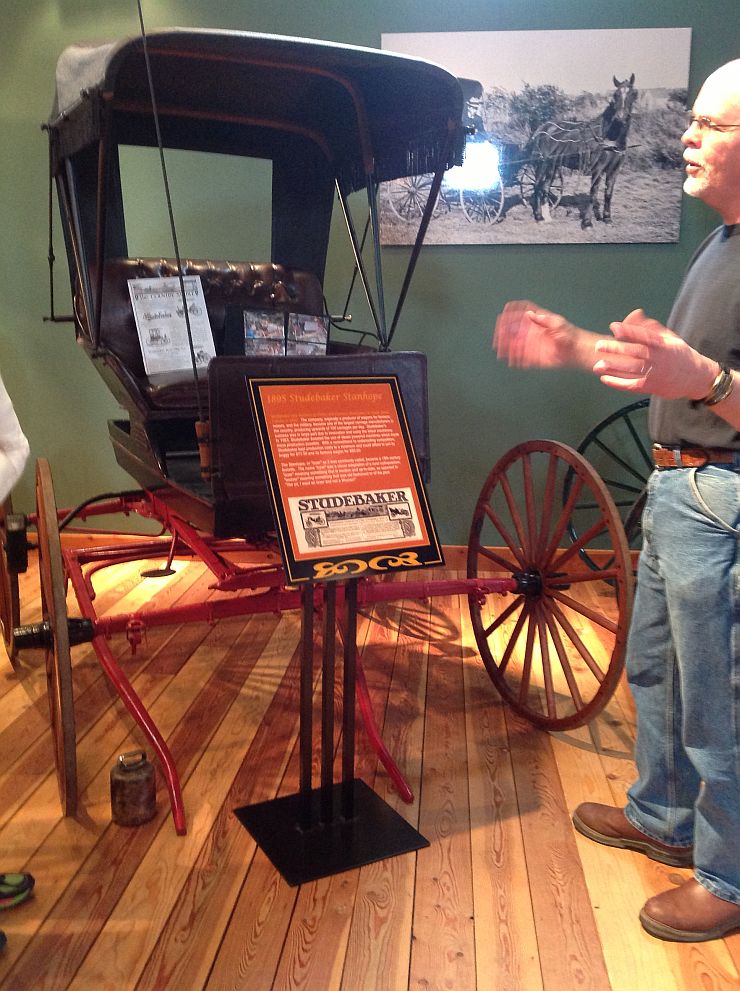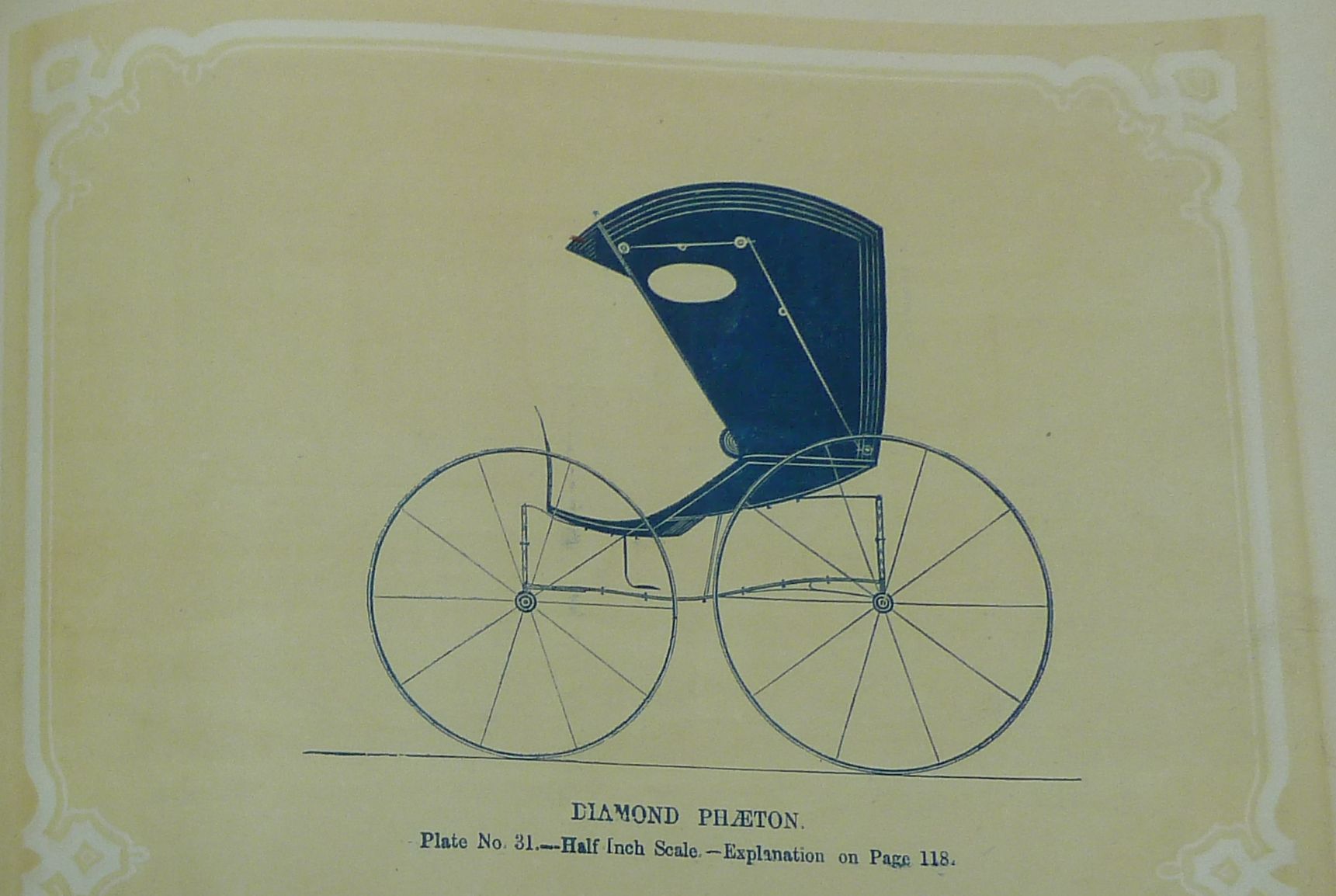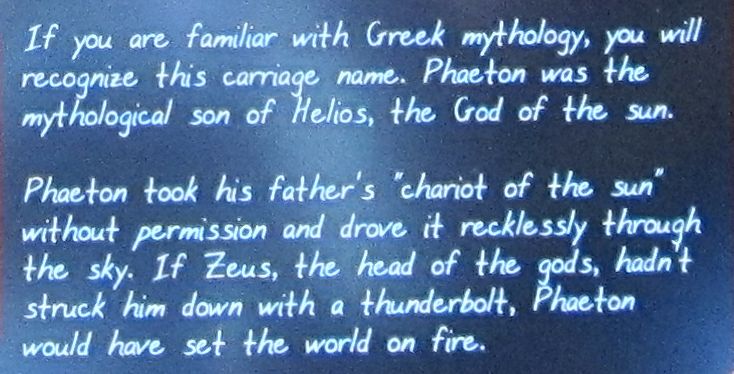Last weekend I had the good fortune to get away to Cannon Beach with my friend Deb. Driving down Hwy 101, we stopped in Raymond, Washington for a visit to the Northwest Carriage Museum.
 Jerry Bowman, Curator, showed us around. Here he’s noting the features of the Studebaker Stanhope, popular around 1895. The interpretive sign explains: “The Stanhope, or ‘Izzer’ as it was commonly called, became a 19th century favorite. The name ‘Izzer’ was a clever adaptation of a rural colloquialism, ‘izzer’ meaning something that is modern and up-to-date, as opposed to ‘wuzzer’ meaning something that was old fashioned or of the past. ‘Yes sir, I want an Izzer and not a Wuzzer!'”
Jerry Bowman, Curator, showed us around. Here he’s noting the features of the Studebaker Stanhope, popular around 1895. The interpretive sign explains: “The Stanhope, or ‘Izzer’ as it was commonly called, became a 19th century favorite. The name ‘Izzer’ was a clever adaptation of a rural colloquialism, ‘izzer’ meaning something that is modern and up-to-date, as opposed to ‘wuzzer’ meaning something that was old fashioned or of the past. ‘Yes sir, I want an Izzer and not a Wuzzer!'”
The Northwest Carriage Museum has samples of European and American coaches and buggies (including examples from famous companies such as Landau and Brewster), wagons, sleighs, and even an elaborately carved hearse. So many features of these vehicles, from the dashboards to the glove compartments to the glistening paint jobs, prove carriages established early nomenclature for the present-day automobile.
As Deb and I went on our way, the serendipitous weekend continued. In Cannon Beach, I found some old German books in Jupiter’s Rare & Used Books. On the drive home, passing through South Bend, Washington, we happened upon Jayden’s German Store, stocked with many varieties of delicious German candies and mouth-watering chocolates.





